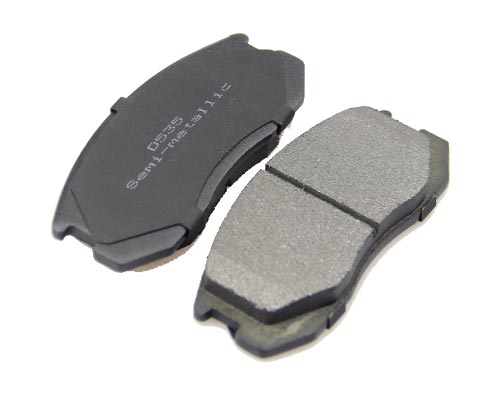Are Low Metallic Brake Pads Good?
When it comes to choosing the right brake pads, many drivers and distributors wonder: are low metallic brake pads good? As someone deeply involved in the automotive parts industry, I want to break down the benefits and considerations of low metallic brake pads, helping you make informed choices for your customers.
What Are Low Metallic Brake Pads?
Low metallic brake pads consist of organic materials blended with a small amount of metal, typically ranging from 5% to 30%. This unique composition aims to balance performance, durability, and cost-effectiveness. Many drivers seek these pads for their reliable stopping power and durability.
How Do Low Metallic Brake Pads Work?
These brake pads generate friction when the driver presses the brake pedal, allowing the vehicle to stop effectively. The metallic components enhance braking efficiency, particularly under heavy use or high temperatures. If your customers frequently drive in demanding conditions, low metallic pads can be an excellent choice.
Benefits of Low Metallic Brake Pads
Enhanced Braking Performance: Low metallic brake pads deliver superior stopping power, making them ideal for various driving situations, from city commuting to highway driving.
Excellent Heat Dissipation: These pads dissipate heat effectively, minimizing the risk of brake fade during intense braking. Drivers who tow or carry heavy loads will especially appreciate this feature.
Longevity and Durability: With a longer lifespan compared to organic options, low metallic pads reduce replacement frequency, providing convenience for drivers and cost savings for distributors.
Affordability: They often come at a competitive price point, making them a cost-effective choice for many vehicle owners.
Potential Drawbacks of Low Metallic Brake Pads
While low metallic pads have numerous advantages, there are a few downsides to consider:
Increased Noise Levels: Low metallic brake pads can be noisier than ceramic pads, which might be a concern for drivers seeking a quieter ride.
Brake Dust Production: These pads tend to generate more brake dust, which can lead to a messier wheel appearance. This factor is important to discuss with your clients.
Low Metallic vs. Semi-Metallic Brake Pads
It’s crucial to differentiate low metallic from semi-metallic pads. Semi-metallic pads contain a higher percentage of metal, offering even greater performance but often at the expense of noise and dust. Depending on your customers’ preferences and driving habits, low metallic pads might strike the right balance between performance and comfort.
Choosing the Right Brake Pads for Customers
When recommending low metallic brake pads, consider your customers’ driving styles and vehicle types. Ask questions about their typical driving conditions—are they primarily in urban areas, or do they frequently tow? Tailoring your suggestions based on individual needs will enhance customer satisfaction and loyalty.
Conclusion: Are Low Metallic Brake Pads Good?
So, are low metallic brake pads good? The answer is a resounding yes, especially for drivers who need reliable performance in various conditions. By understanding their benefits and potential drawbacks, you can provide valuable insights that help your customers make informed decisions.

